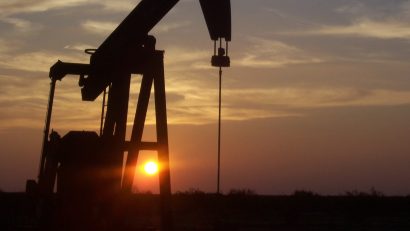Ah, Canada! It’s a nation renowned for its stunning landscapes and vast natural resources. Among these resources, oil and gas have played a pivotal role in shaping the country’s economy and global presence. The oil and gas industry in Canada is a mosaic of challenges and opportunities, constantly evolving and adapting to the dynamic market conditions. In this blog post, we delve deep into the labyrinth of Canada’s oil and gas industry, exploring its ups and downs, its potential, and the perplexities it faces on its journey towards a sustainable future.
A Feast for the Industry: Canada’s Vast Reserves
Canada hosts one of the largest reserves of oil and gas in the world. From the oil sands of Alberta to the offshore riches of the Atlantic provinces, the country’s natural bounty has made it an attractive destination for domestic and international investors. With extensive exploration and extraction activities, the industry contributes significantly to Canada’s GDP and employment opportunities for thousands of Canadians.
The Multifaceted Challenges
However, as with any tale of opportunity, challenges lurk in the shadows. One of the foremost challenges facing the Canadian oil and gas industry is the environmental impact. Extraction methods, particularly for oil sands, have attracted criticism due to their carbon-intensive nature. Striking a balance between meeting energy demands and preserving the environment remains a perplexing task.
Another significant challenge obstructing the industry’s growth is the lack of pipeline infrastructure. Despite efforts to construct new pipelines, bottlenecks in transportation capacity have resulted in discounts on Canadian oil prices in international markets. This issue poses an impediment to the industry’s potential for growth and leaves Canada with limited options for maximizing its resources.
The Quest for Sustainability
Amidst these challenges, the industry has embarked on a journey towards sustainability. Innovations in technology are driving the transformation, making extraction and production processes more efficient and reducing their environmental footprint. Investments in research and development are vital for finding cleaner energy alternatives and improving the industry’s sustainability credentials.
As Canada strives to meet its climate commitments, several provinces have implemented carbon pricing mechanisms to incentivize emission reductions. These initiatives foster innovation and propel the industry towards a greener and more sustainable future.
Moreover, the industry recognizes the need for collaboration and engagement with Indigenous communities. Partnering with the First Nations to ensure meaningful participation and benefits are recognized as crucial steps towards inclusivity and more sustainable resource development.
Opportunities on the Horizon
Despite the challenges, the Canadian oil and gas industry remains resilient. As global energy demand continues to rise, Canada’s vast reserves position it as an essential player in meeting future energy needs. Natural gas, considered a cleaner alternative to coal, offers opportunities for growth and diversification. LNG (liquefied natural gas) projects on the west coast provide a gateway to export Canadian energy to international markets.
Furthermore, the industry holds significant potential for technological innovation. Advances in carbon capture and storage (CCS) technologies, for instance, can mitigate emissions and help Canada transition to a low-carbon economy. The development of renewable energy sources, such as wind and solar, complementing traditional oil and gas operations, can provide the industry with a competitive advantage in the global energy landscape.
Navigating the Unknown
As we conclude our exploration of Canada’s oil and gas industry, we find ourselves standing at the crossroads of challenge and opportunity, uncertainty and potential. The industry faces a daunting task of reconciling economic growth with environmental stewardship. Yet, with innovation, collaboration, and a committed focus on sustainability, Canada’s oil and gas industry can navigate the unknown terrain of the future successfully.
In this uncharted territory, the industry holds the key to unlocking both economic prosperity and environmental harmony. The mosaic may be complex, but it is the collective efforts of government, industry players, Indigenous communities, and citizens that will determine the journey’s outcome. Together, embracing creativity, flexibility, and an unwavering commitment to sustainability, we can foster a thriving oil and gas industry for Canada—one that stands the test of time, elicits awe, and leaves a lasting positive impact. Let us embark on this journey hand in hand, with determination and ingenuity, towards a brighter energy future for Canada and the world.



